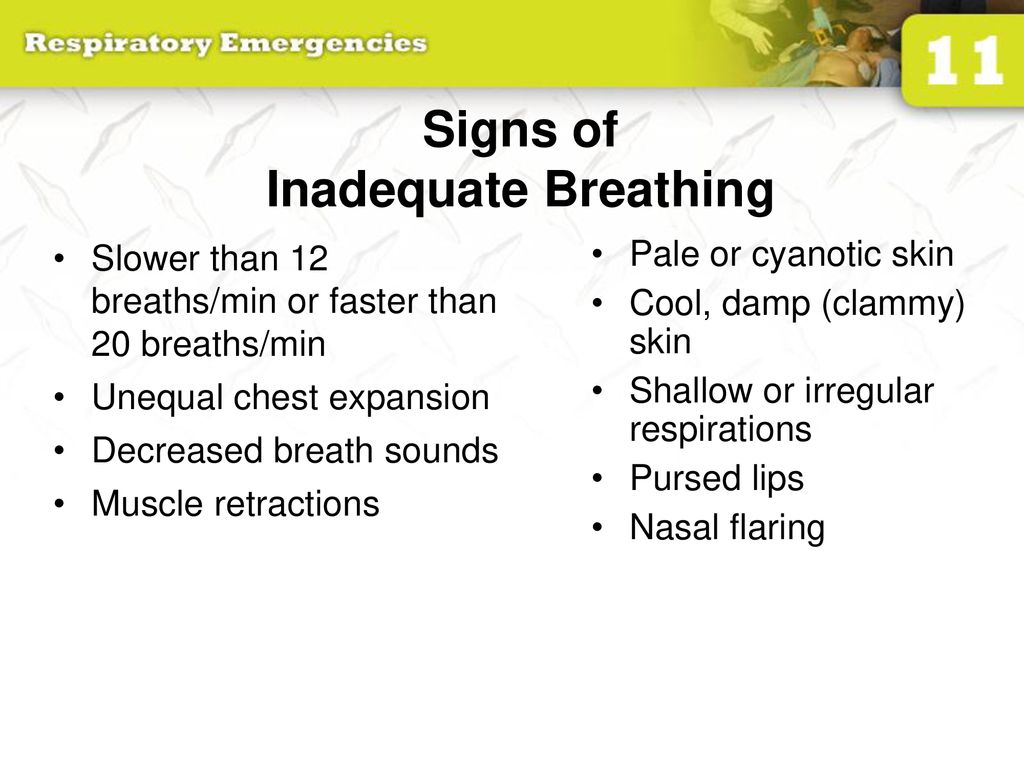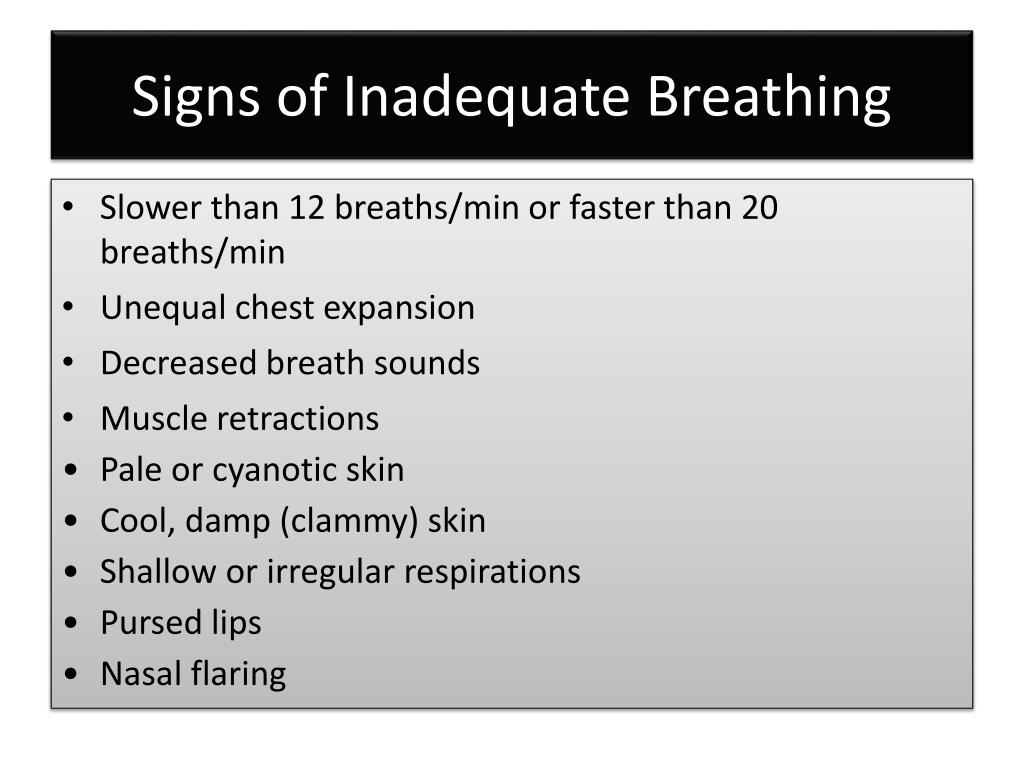Which Of The Following Is A Sign Of Inadequate Breathing
.jpg)
Emergency responders and the public must be vigilant: Identifying inadequate breathing is a matter of life and death. Rapid recognition of these signs is crucial for prompt intervention.
This article outlines key indicators of inadequate breathing, providing critical information for immediate action and potentially saving lives. Understanding these signs can empower individuals to seek timely medical assistance.
Recognizing Inadequate Breathing: Critical Signs
Several observable signs indicate that a person is not breathing adequately. These signs necessitate immediate medical attention.
Abnormal Respiratory Rate
An abnormally slow or rapid breathing rate is a red flag. Normal respiratory rates vary by age, but significant deviations warrant concern. According to the American Heart Association, a normal adult respiration rate is typically between 12 and 20 breaths per minute.
Respirations above 25 or below 12 breaths per minute while at rest could indicate a serious underlying issue. Infants and children have faster normal rates.
Changes in Skin Color
Cyanosis, a bluish discoloration of the skin, especially around the lips and fingertips, indicates severe oxygen deprivation. This is a critical and late sign of inadequate breathing. Pallor (paleness) or a mottled appearance can also suggest compromised oxygen delivery.
Use of Accessory Muscles
Observing the use of accessory muscles in the neck and chest signifies increased effort to breathe. This includes visible retractions (pulling in) of the skin between the ribs or above the sternum. These actions suggest the person is struggling to get air in and out of their lungs.
Altered Mental Status
Confusion, agitation, lethargy, or decreased level of consciousness can be caused by inadequate oxygen supply to the brain. Any sudden change in mental status accompanying breathing difficulties should be treated as an emergency. Immediate medical assistance is critical.
Noisy Breathing
Gasping, gurgling, wheezing, stridor (a high-pitched whistling sound), or snoring noises can indicate airway obstruction or respiratory distress. These sounds are often associated with conditions like asthma, anaphylaxis, or foreign body obstruction. Addressing airway noises can dramatically improve a patient's prognosis.
Chest Trauma or Deformity
Visible chest injuries or deformities can compromise breathing mechanics. A flail chest, where a segment of ribs is broken and moves paradoxically during respiration, severely impairs lung function. Even minor trauma can lead to internal damage impacting respiration.
Excessive Sweating
Diaphoresis, or excessive sweating, especially when combined with other signs, can indicate the body is working hard to compensate for respiratory distress. Diaphoresis is frequently seen alongside rapid heart rate and anxiety.
Inability to Speak in Full Sentences
If a person is struggling to speak due to shortness of breath, this is a significant sign of respiratory compromise. Requiring frequent pauses between words to catch their breath shows a significant reduction in oxygen reserve.
Immediate Actions
Upon recognizing these signs, immediately call emergency services (911 in the US). Provide clear and concise information about the person's condition and location.
If trained, begin basic life support measures, such as administering oxygen or performing rescue breathing. Continuously monitor the person's condition until professional help arrives.
Documenting the observed signs and symptoms is important for relaying information to arriving medical personnel. The more information that can be provided, the easier it is to assess the situation and offer the best treatment.
Ongoing Developments
Public health organizations continually update guidelines and recommendations for recognizing and responding to respiratory emergencies. Staying informed through reputable sources like the American Red Cross and the National Institutes of Health (NIH) is essential. Regular refresher courses in basic life support are highly recommended.
Furthermore, research is ongoing to develop more effective methods for early detection and treatment of respiratory distress. Advancements in pre-hospital care are constantly improving patient outcomes.
Knowledge is the first line of defense. Recognizing the signs of inadequate breathing can empower individuals to save lives by acting quickly and decisively.
.jpg)




.jpg)




.jpg)







